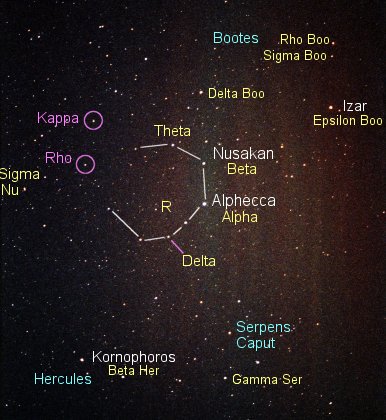

THE PLANETThe circle shows the location of the solar type class G star Rho Coronae Borealis (in the constellation Corona Borealis). The planet orbits Rho Coronae Borealis in 39.6 days (45 percent that of Mercury's orbital period around the Sun) and is and is 0.23 astronomical units from the star (which equals 35 million kilometers, 21 million miles, or 59 percent Mercury's distance from the Sun). The discovery measurements give a lower limit to the planet's mass of 1.1 times the mass of Jupiter. However, the star is surrounded by an extended dusty disk (detected out to about 85 astronomical units) that may represent the debris of the formation of the planetary system (akin to the "Kuiper Belt" of comets that stretches beyond the orbit of Pluto). From the measured tilt of the disk, Rho Coronae Borealis's planet is found to have a mass 1.5 times that of Jupiter. |